A little off the beaten track, in the Neustadt district, is one of the most impressive and depressing places I have visited so far, the Bautzner Strasse Dresden Memorial, a former “Stasi” prison.
We almost missed the inconspicuous driveway that led us to the small car park of the Bautzner Strasse memorial. This was certainly not only due to the size of the driveway, but also because I have always associated prison with a building protected by high walls and here, at first glance, is a residential and office building.
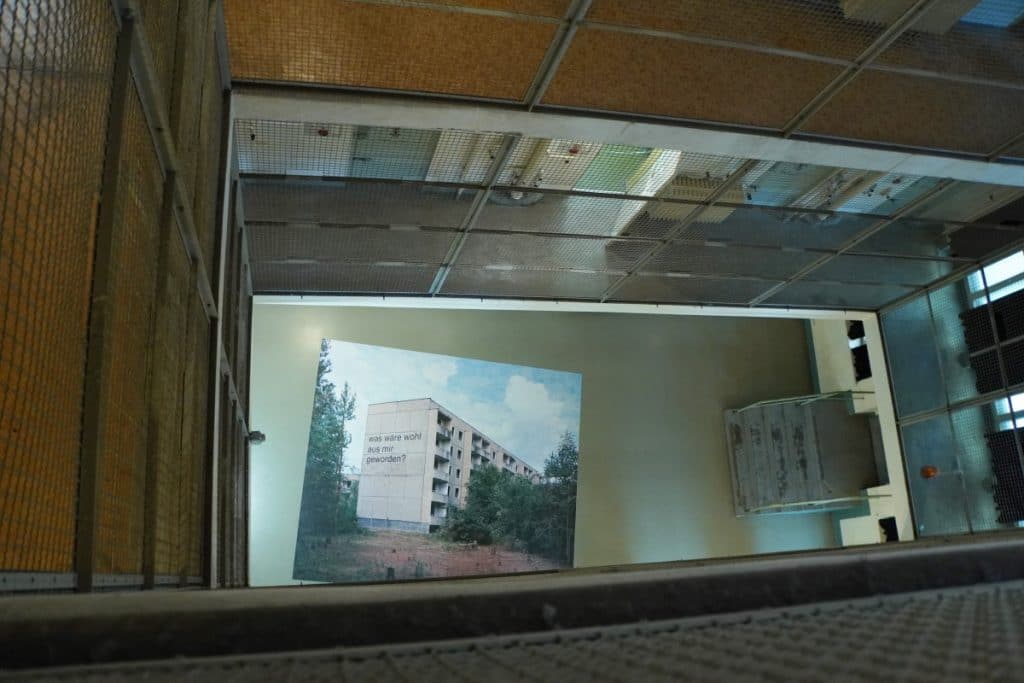
The memorial is located on the grounds of the former district administration of the Ministry for State Security in Dresden, at Bautzner Straße 112a.
The Soviet Cellar Prison
After the Second World War, the Soviet secret service used several buildings in Dresden as detention centres. They often used existing prisons; in Bautzner Straße, in an old paper and cardboard factory, they set up a remand prison in a cellar. This was probably used for detention from 1949 onwards.
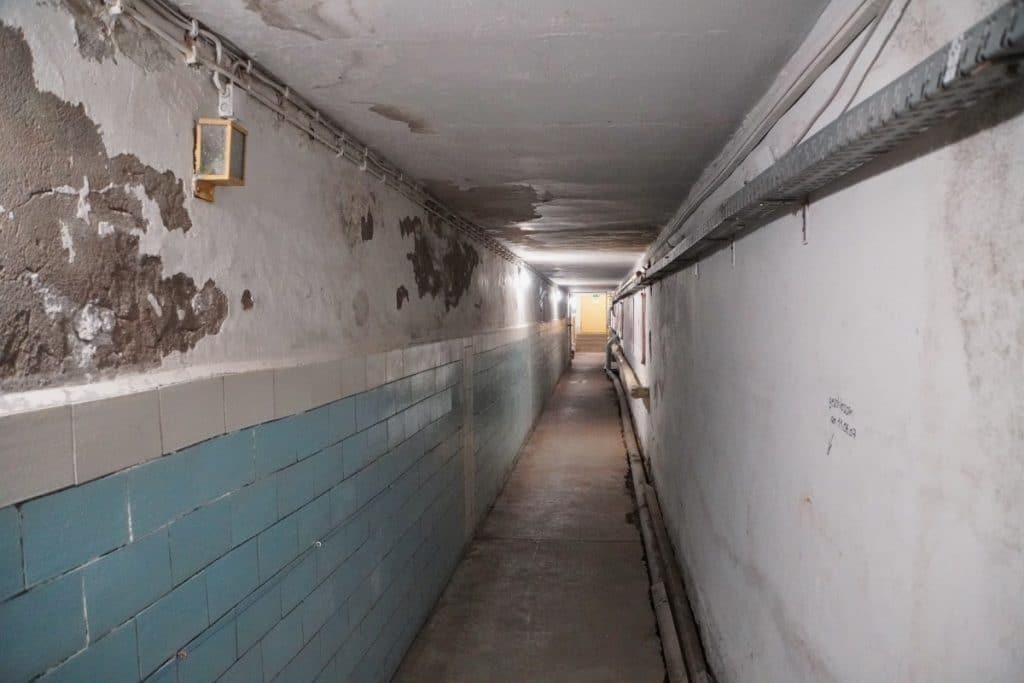
Not only alleged Nazi and war criminals, but also critics of the system were imprisoned here. Many of the prisoners were sentenced to death by the Soviet Military Tribunal or sent to a gulag, a penal and labour camp in the Soviet Union. Other prisoners were sent to special camps in the Soviet occupation zone. Impressive documents and information boards document these gruesome sentences.
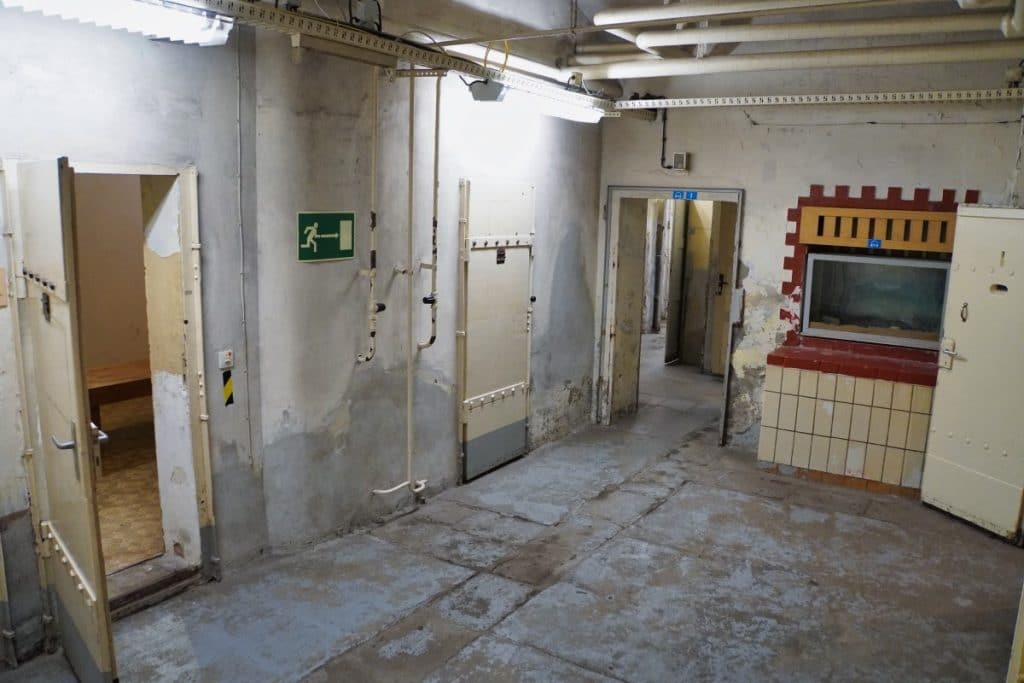
We visited this area of the memorial first. A narrow staircase leads to the so-called “Fuchsbau”, the former prison cellar. Metal doors conceal barren cells. Some of the cells are open and you can see into dark musty rooms, some of which still house the old cots.
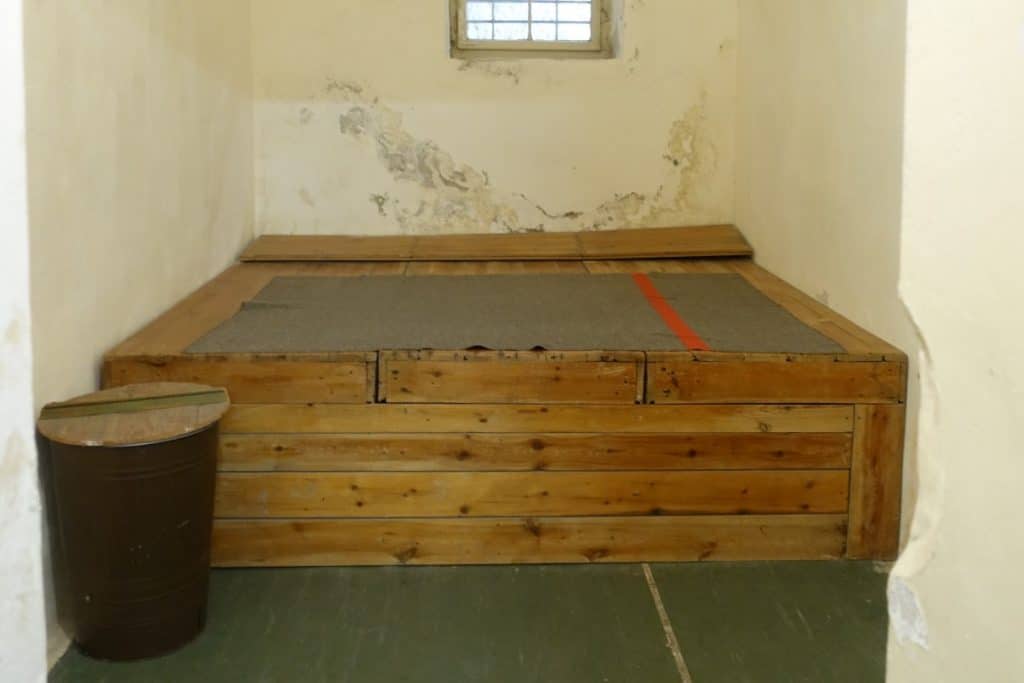
In one of the cells with a rather wide wooden cot, 5-7 people were imprisoned. Today you can also see into the washrooms, toilets and the barracks. A staircase leads to an inner courtyard, which was the only possibility for the prisoners to see some daylight.
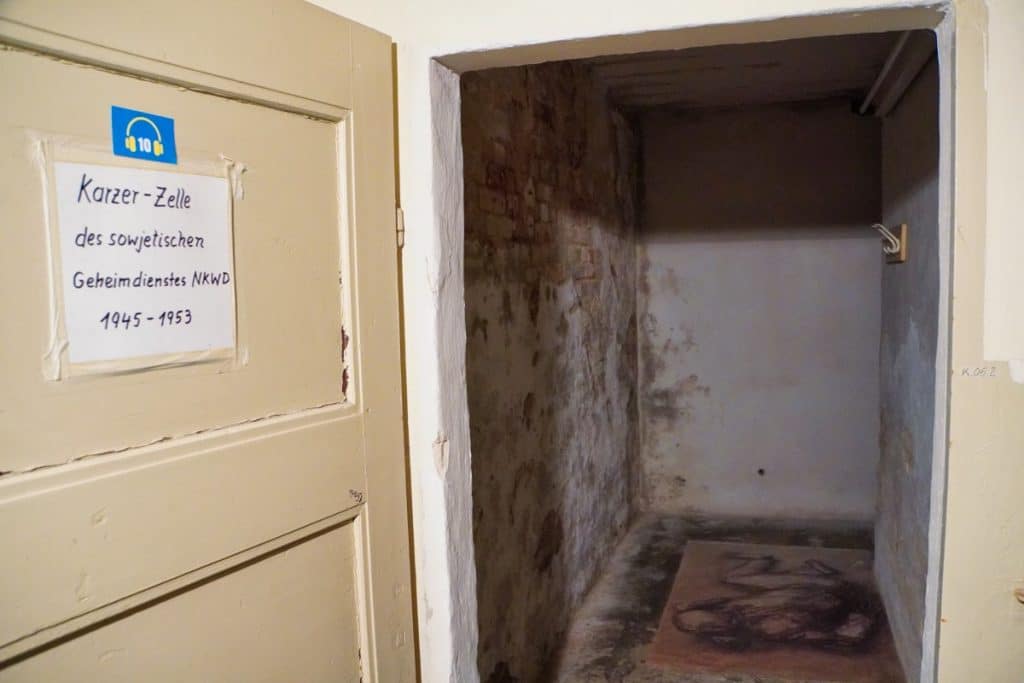
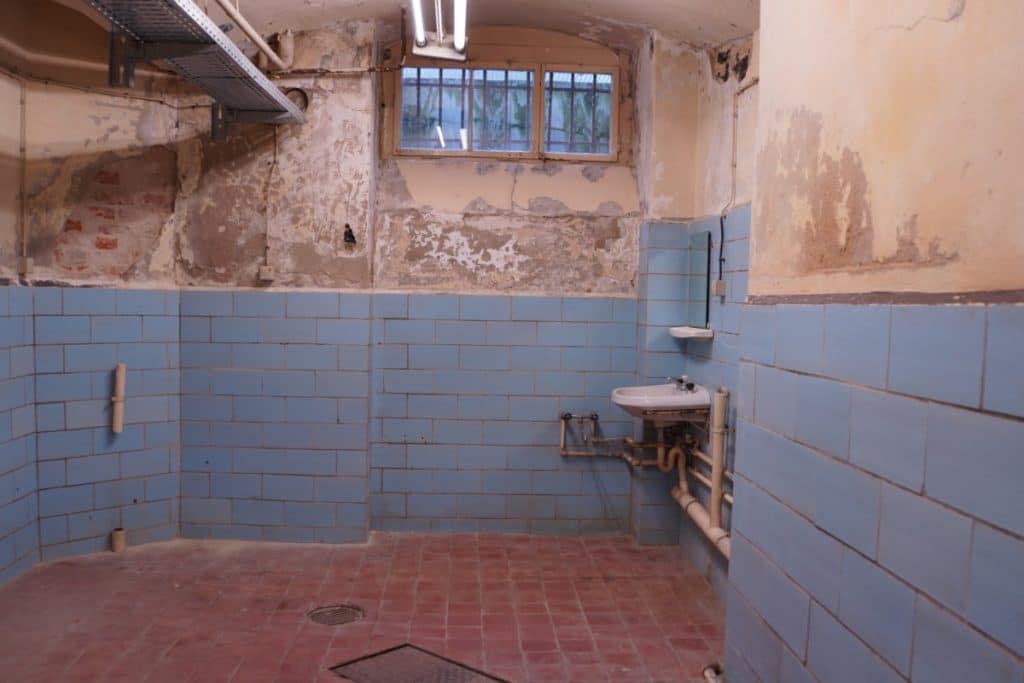
In some of the former cells, there are boards today that tell about the fate of individual prisoners. We did not borrow the audio guide in which contemporary witnesses talk about their memories. Even without hearing these reports, I found the cellar prison so oppressive, degrading and frightening that I was only too happy to leave this place.
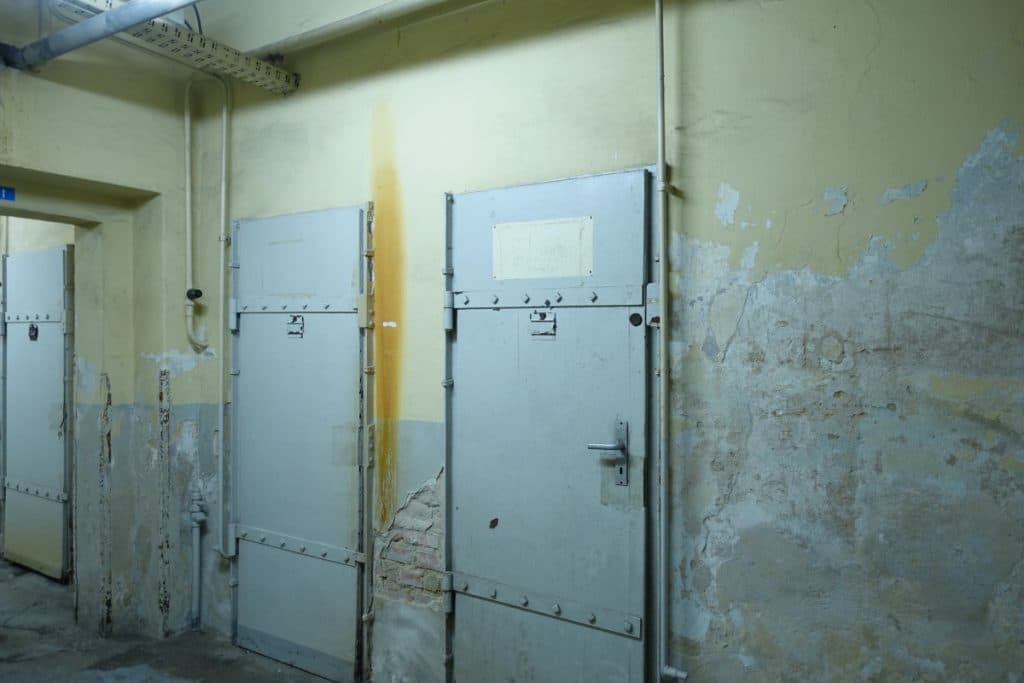
The Stasi district administration and the Stasi prison
In 1953, the Ministry for State Security took over the building on Bautzner Straße and had a new detention centre built.
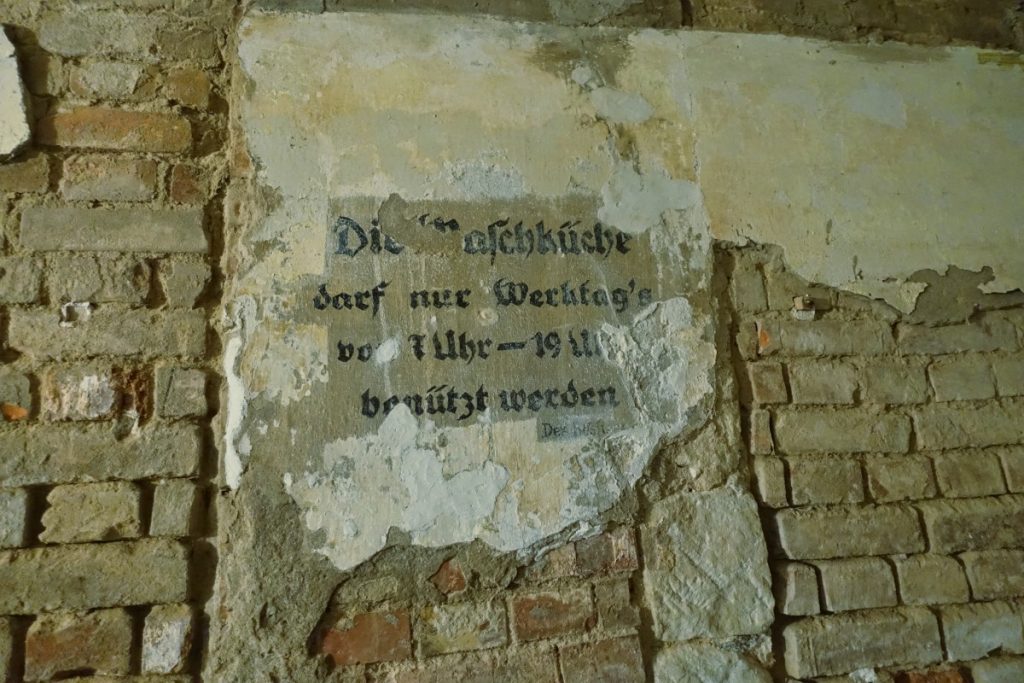
Today it is assumed that about 10,000 GDR citizens were imprisoned here until 1989. The majority of those imprisoned were political prisoners who, for example, had protested against conditions in the GDR, exhibited oppositional behaviour (espionage/agent activities, resistance/violence against police, contact with western organisations) or had attempted republican flight.
There were also cells for foreigners. These were housed here, for example, on suspicion of espionage or if they belonged to smuggling groups. In contrast to the cells for GDR citizens, the foreigners were given a single cell that was as large as the triple cell of the other prisoners. In addition, the cell had a barred window with transparent glass so that there was daylight in the cell. The “foreigners” were allowed to sleep on metal cots which, in contrast to the wooden cots, had springs.
The prison conditions were not only inhumane by today’s standards. The prisoners had to endure rigorous interrogations and lived with immense psychological stress.
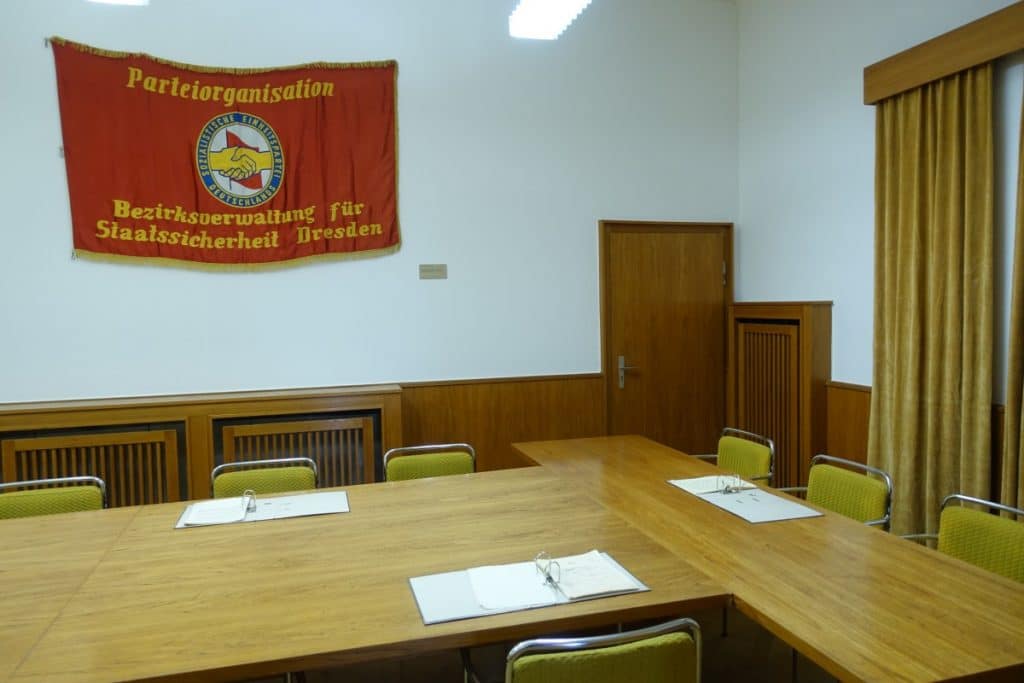
In addition to the remand prison, the state apparatus also used parts of the building for the Stasi district administration.
The end of the Stasi prison
Only four weeks after the fall of the Berlin Wall, demonstrators occupied the entire building. They thus succeeded in stopping the destruction of numerous Stasi files, which had already begun, and in securing the existing inventory. Political prisoners were no longer in the remand prison at that time. The prison cells were used to store the saved files, thus protecting them from destruction and access by unauthorised persons.
In 1990, after reunification, the Dresden branch of the Federal Commissioner for the Records of the State Security Service of the former German Democratic Republic (BStU) moved into the building. For three years, an attempt was made to sift through and evaluate the Stasi documents that had been secured. Part of the building was used by a vocational school and the former refectory was a discotheque.
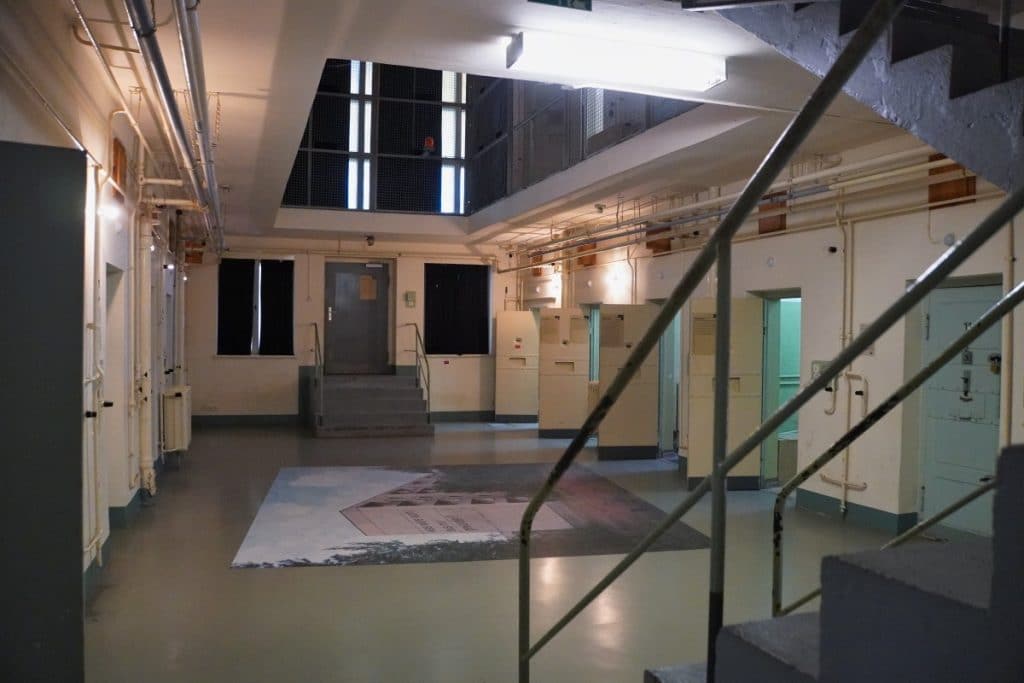
In 1994, the detention centre was listed as a historical monument and only three years later, the association “Erkenntnis durch Erinnerung” and the “Stiftung Sächsische Gedenkstätten zur Erinnerung an die Opfer politischer Gewaltherrschaft” (Saxon Memorials Foundation for the Remembrance of Victims of Political Tyranny) began to build the Bautzner Strasse Memorial and make it accessible to the public.
A visit to the Stasi prison
After leaving the cellar prison, we opened a door and stood in a multi-storey pre-trial detention centre. Almost everything here is still the same as when you left it in 1989.
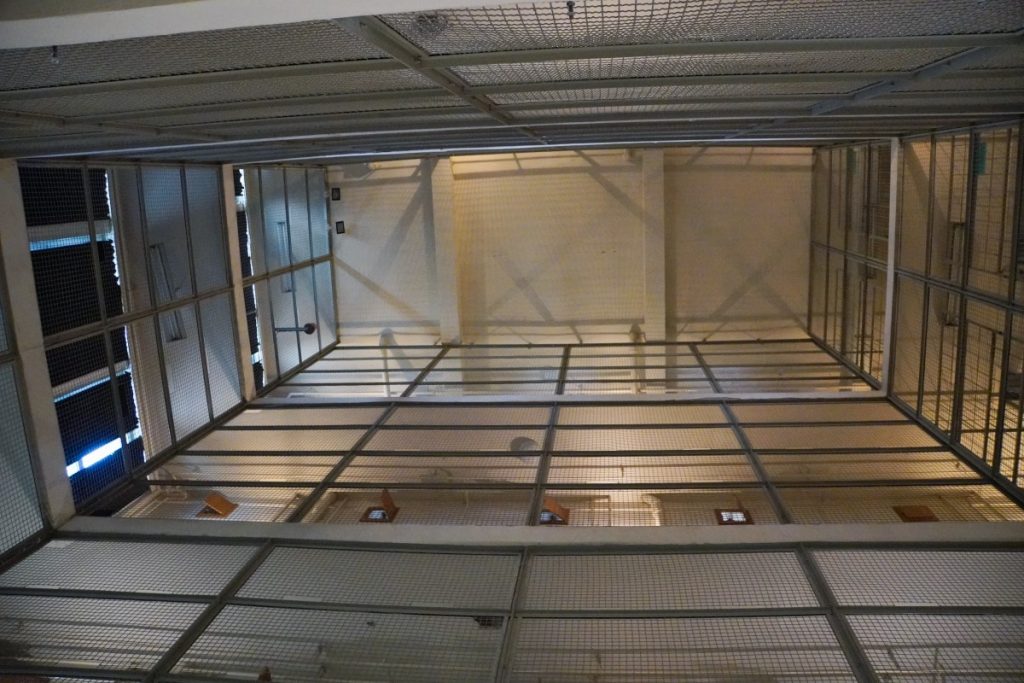
The cells are located on the long sides around a small interior space. If you stand in the middle and look up, you can see three floors on which there are more cells. The round corridor on each floor is separated from the inner area by bars.
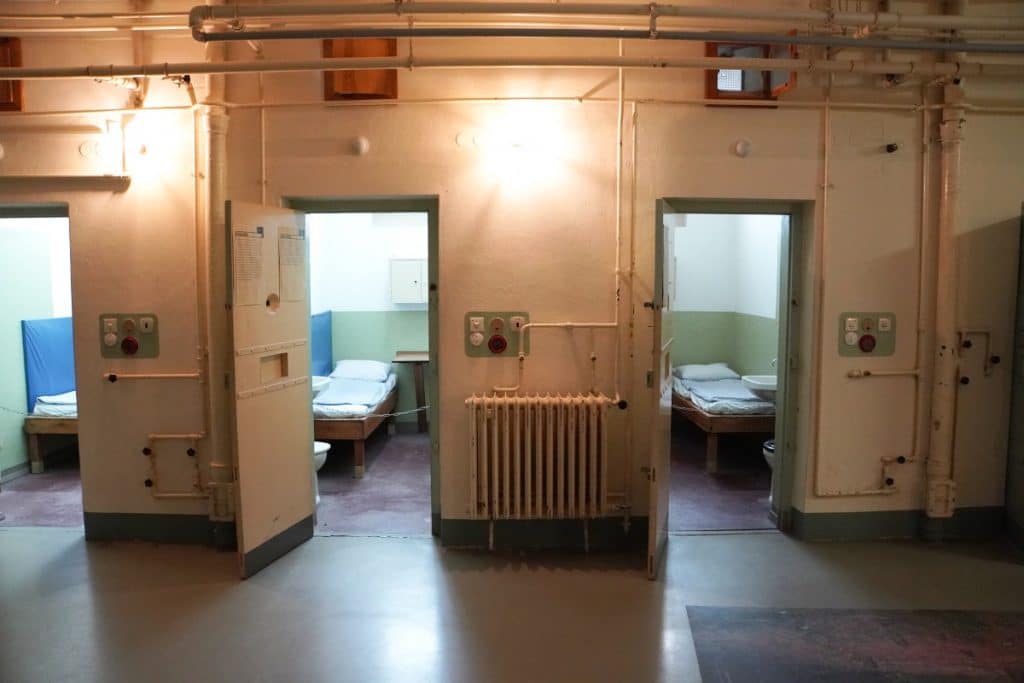
Spread over the floors are 44 cells that were “inhabited” alone or in pairs. In some of the cells you can look through the open door, in others you can see the “guards” through the peephole.
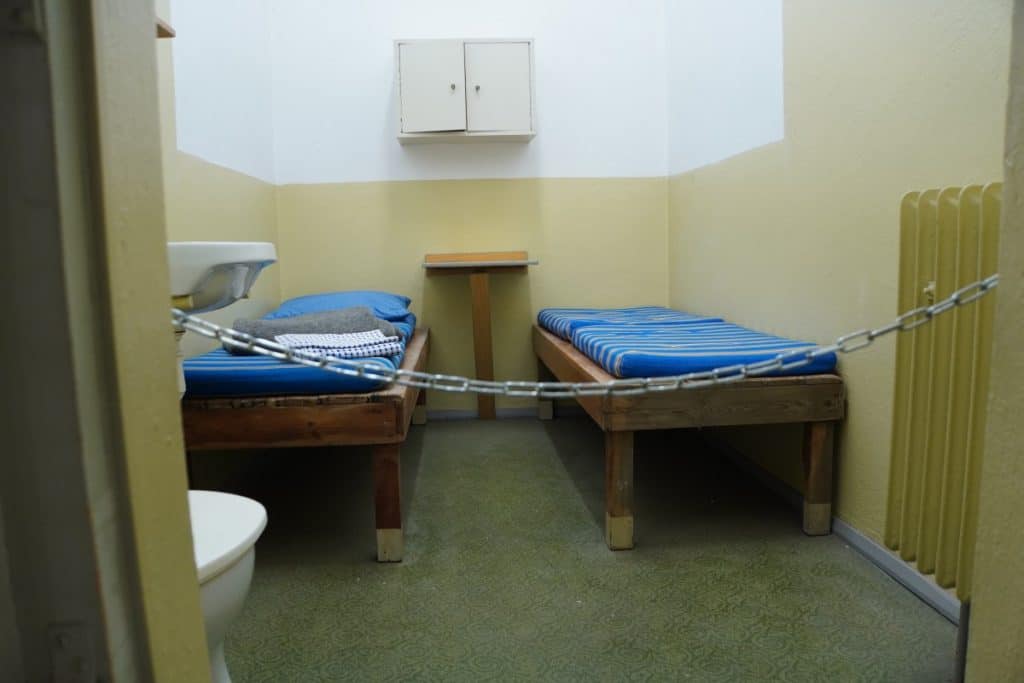
In addition, there are some “functional cells”, for example the interrogation room, the room for taking photographs, but also detention cells and the vehicle lock for the prisoner transporters, are open for viewing.
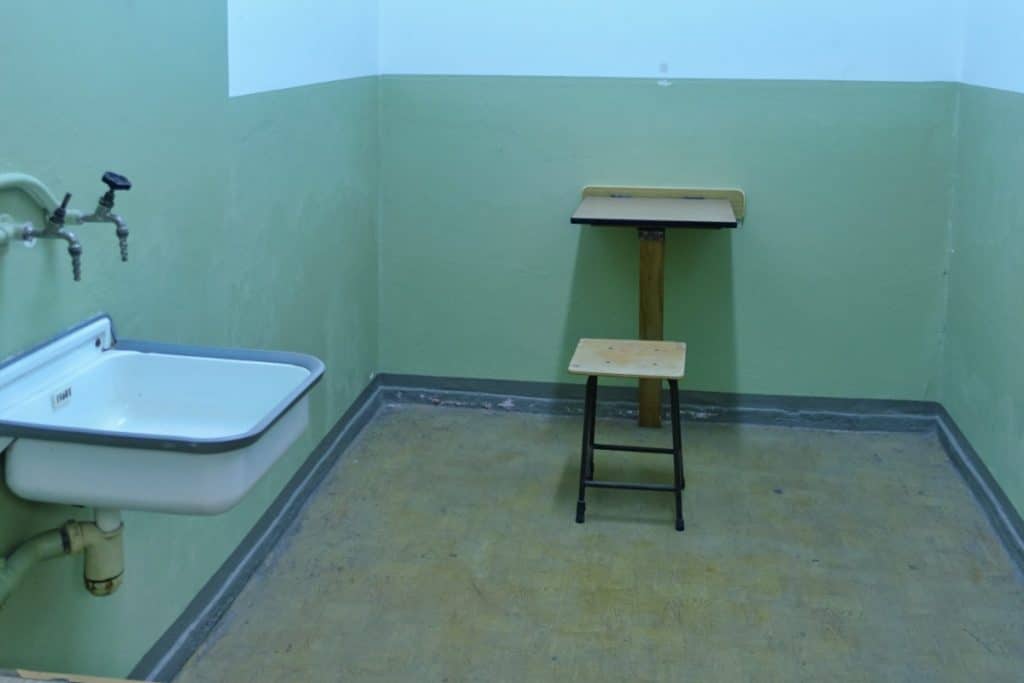
On our tour we pass the “writing cell”. The prisoners were not allowed to write in their own cell. Once a week, they could write letters to relatives in this cell, under guard, but they were not allowed to include any information about the prison conditions. Before they were sent, they were checked and only letters that complied with the rules were sent.
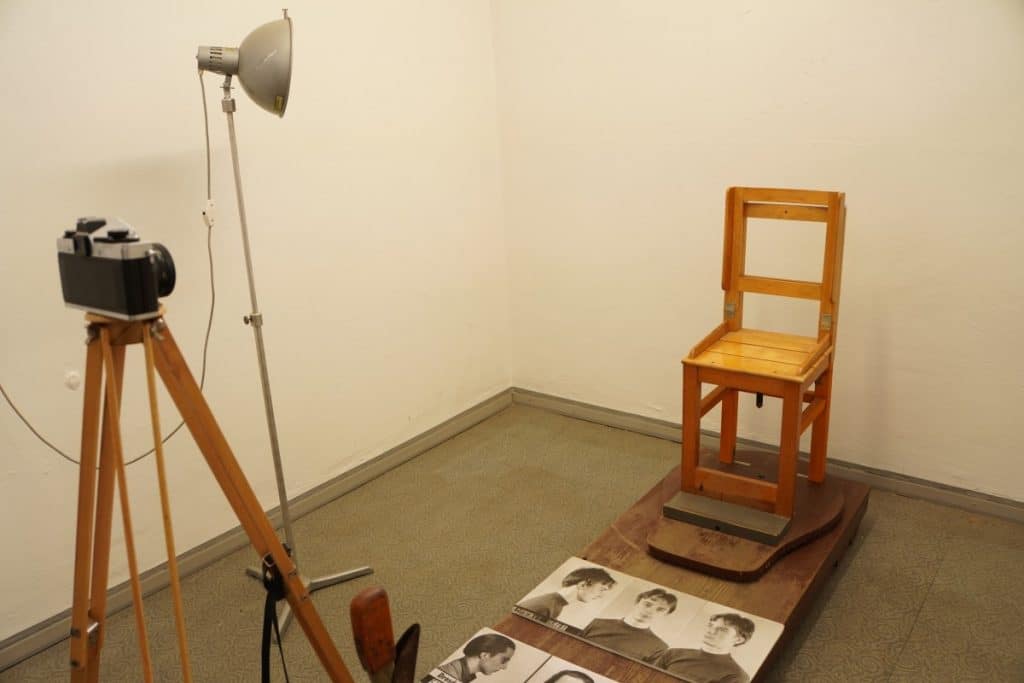
Another functional cell is the photo room. Immediately after the pre-trial detainee arrived in prison, photos were taken of him. He kept his civilian clothes on and nothing was allowed to be done to his hairstyle or beard. Three pictures were taken from different perspectives. The prisoner sat on a chair that was moved into the right position with a lever. In addition, the fingerprints of all fingers were taken and characteristic features of the body were noted.
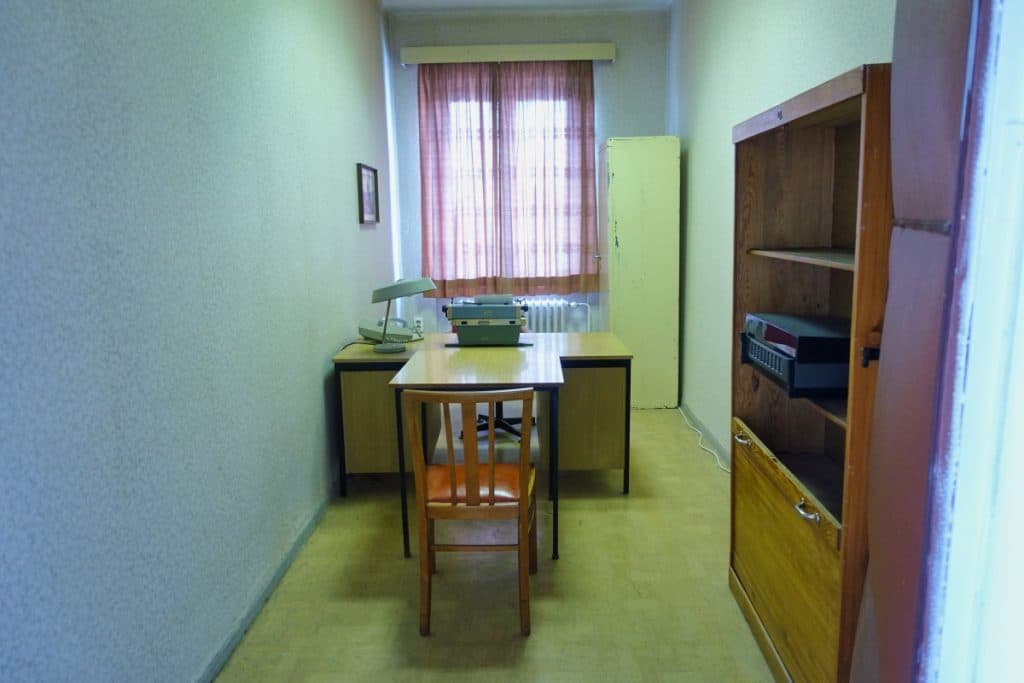
After first exploring the ground floor, we went up the stairs to the upper floors. You can look down through fixed bars – here the saying “behind bars” is justified.
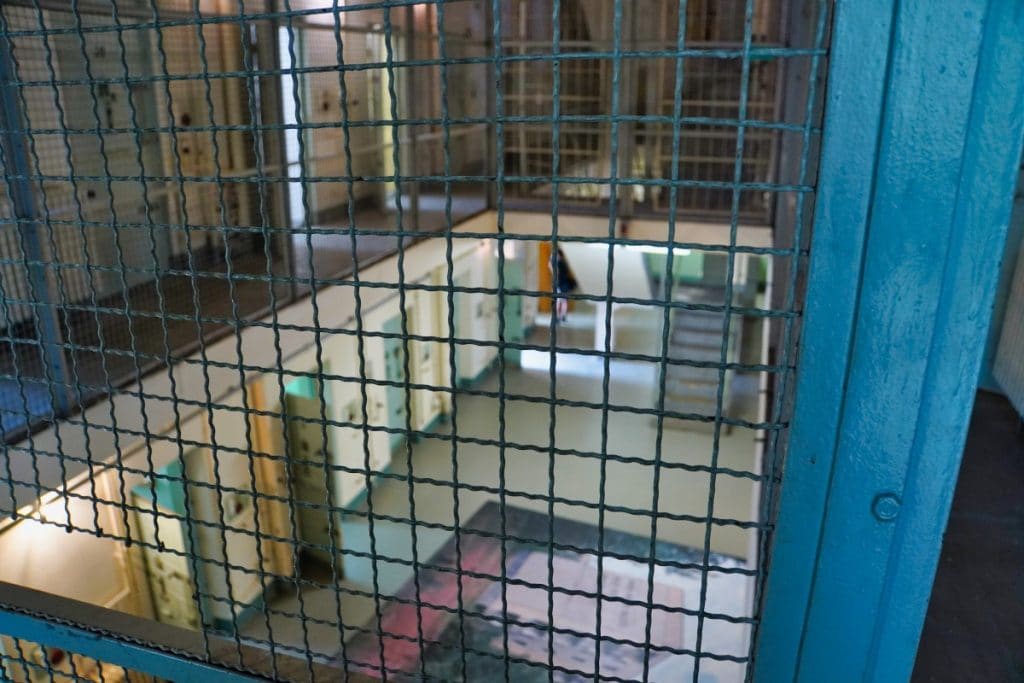
Throughout the prison area, panels tell you not only about the function of the individual rooms, but also about the daily routine of the prisoners or the process of prisoner admission. Other panels tell about the fates of prisoners.
On the top floor of the cell building, we opened a door and entered the former rooms of the Stasi district administration in Dresden via a staircase. These were opened to visitors to the Bautzner Strasse memorial in 2014.
The district administration in Dresden was divided into 16 district service offices and one object service office with over 30 service units. A total of about 3,500 full-time staff were employed there in 1989.
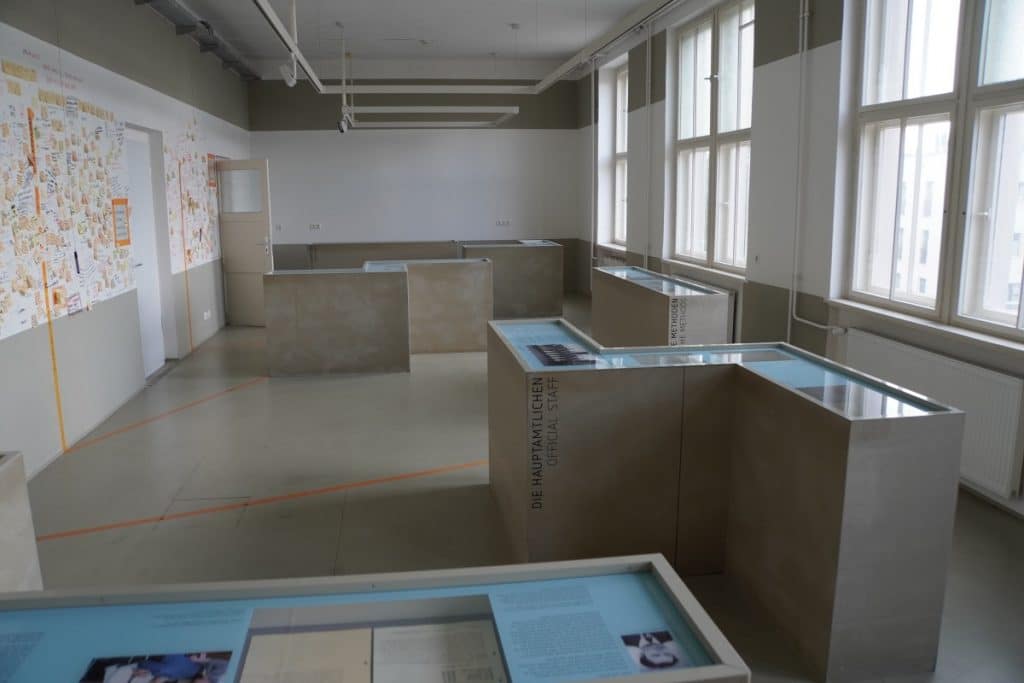
On a tour through the really very informative and well prepared exhibition, you eventually also reach a consultation room, the Stasi banqueting hall and the office of the last head of the district administration. The rooms look as if someone has just stepped out for a moment – apart from the unfashionable furnishings.
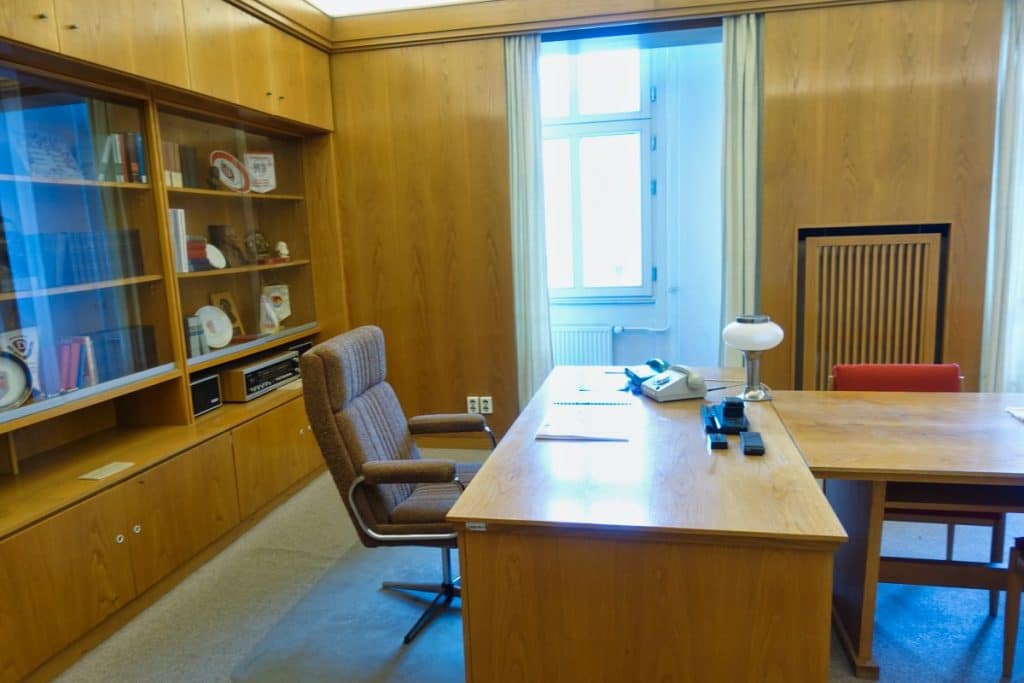
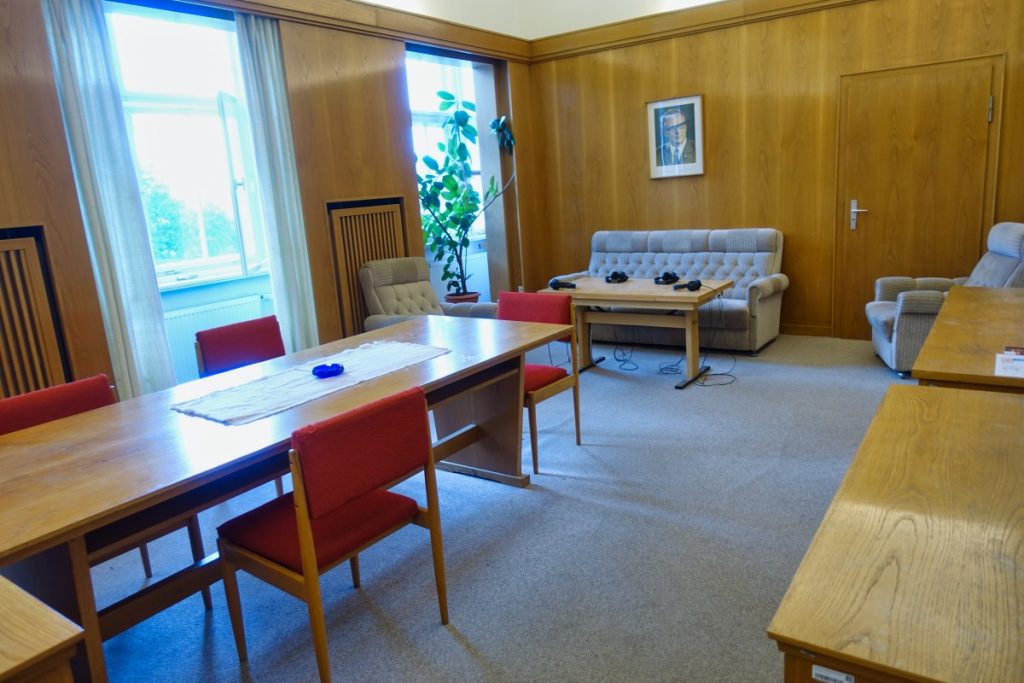
I was impressed by the tour of the Bautzner Straße memorial. It gave me a small and very informative insight into the history of the former GDR, which I had not dealt with enough before.
Address:
Gedenkstätte Bautzner Strasse Dresden
Bautzner Strasse 112a
01099 Dresden
Opening hours:
daily: 10-18 h
Regular closing days:
- 1. January
- Easter Sunday
- 24. bis 26. December
- 31. December
Admission fees:
Adults: 6,00 €
Discounts are offered.
On the last Sunday of the month, admission is free!
Public guided tours:
On Mondays at 2pm there is a public guided tour for €3 + entrance fee.
There is always a free guided tour on the first Sunday of the month at 11 h (you only pay the entrance fee).
Virtual tour of the Bautzner Strasse memorial site
You can take a virtual tour of the building via this link .
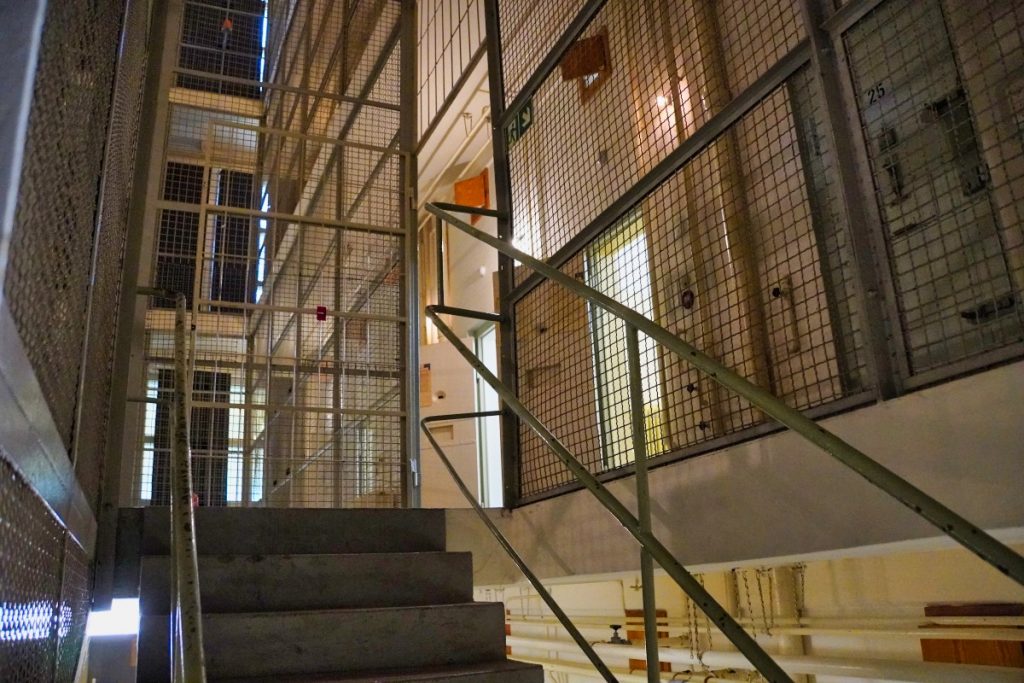

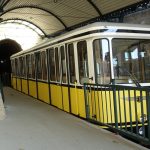


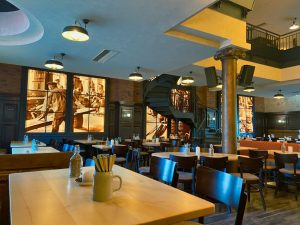
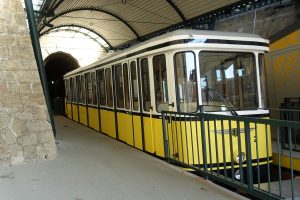

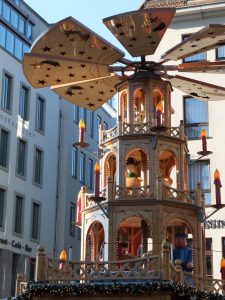



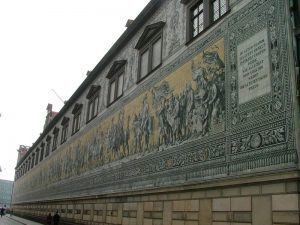



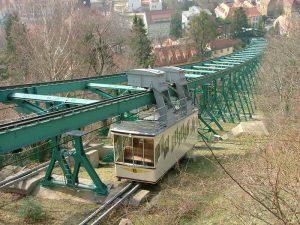
Leave a Reply